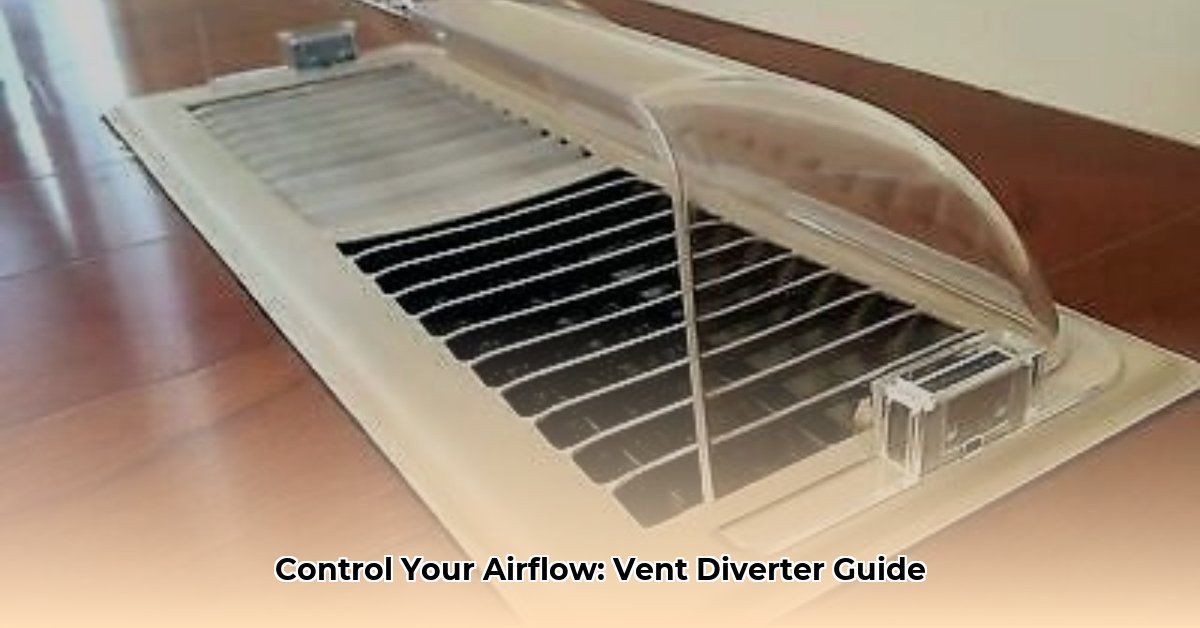Is one room in your house an icebox while another feels like a sauna? Uneven heating and cooling is a common problem, but you don’t have to live with it. Air vent diverters offer a simple, affordable fix that can make a world of difference. This guide will walk you through everything you need to know about these handy little gadgets, from choosing the right type to installing them like a pro.
What Are Air Vent Diverters?
Air vent diverters, also known as deflectors, are like traffic cops for your HVAC system. They attach to your vents and redirect airflow, preventing drafts and helping to distribute air more evenly. They’re typically made of plastic or metal and come in various shapes and sizes to fit different vent types. Think of them as a simple way to fine-tune your home’s comfort without breaking the bank.
Types of Air Vent Diverters
Not all air vent diverters are created equal. Here’s a breakdown of the most common types:
Magnetic Diverters
- Material: Usually plastic, sometimes with metal components.
- Attachment: Magnets. Best for metal vents.
- Adjustability: Often limited, but some offer slight adjustments.
- Pros: Easy to install and remove.
- Cons: Only work on metal vents. May not offer precise airflow control.
Clip-on Diverters
- Material: Typically plastic.
- Attachment: Clips. Suitable for various vent materials, often plastic.
- Adjustability: Some models have adjustable clips or vanes.
- Pros: Versatile and generally affordable.
- Cons: Clips can sometimes break or become loose.
Extender Diverters
- Material: Plastic or metal.
- Attachment: Varies depending on the design; some extend and rest under furniture.
- Adjustability: Some offer adjustable length or airflow direction.
- Pros: Specifically designed to channel air from under furniture.
- Cons: Can be bulky and may not be aesthetically pleasing.
Adjustable Vane Diverters
- Material: Metal or plastic.
- Attachment: Varies; can be magnetic, clip-on, or other mechanisms.
- Adjustability: Highly adjustable vanes or louvers offer precise airflow control.
- Pros: Maximum control over airflow direction.
- Cons: Can be more expensive than other types.
Choosing the Right Air Vent Diverter
Selecting the right diverter is easier than you might think. Consider these factors:
- Vent Type: Magnetic diverters are only for metal vents. Clip-on diverters are more versatile.
- Airflow Needs: Do you need to redirect air up, down, or to the side? Adjustable vane diverters offer the most control.
- Budget: Prices range from a few dollars for basic deflectors to over $20 for more advanced models.
- Aesthetics: While functionality is key, you might also want to consider how the diverter looks on your vent.
Installing Your Air Vent Diverter
Most air vent diverters are incredibly easy to install. Here’s a general guide:
- Clean the Vent: Wipe the vent surface with a damp cloth to remove dust and debris. This is crucial for adhesive-based diverters.
- Position the Diverter: Experiment with different positions to find the optimal airflow direction.
- Attach the Diverter: Follow the manufacturer’s instructions. Magnetic diverters simply snap on, while clip-on diverters require attaching the clips securely.
Benefits of Using Air Vent Diverters
These small devices offer several benefits:
- Improved Comfort: Eliminate drafts and create a more comfortable environment.
- Energy Savings: Improved airflow can reduce the strain on your HVAC system, potentially lowering energy bills. Some studies suggest potential savings, though more research is needed to quantify the exact impact.
- Furniture Protection: Diverters can shield furniture from direct blasts of air, preventing damage and fading.
- Enhanced Air Circulation: While not a replacement for proper ventilation, diverters can contribute to better air circulation, potentially improving indoor air quality. Research in this area is ongoing.
Maintaining Your Air Vent Diverters
Air vent diverters are low-maintenance. Dust them regularly and clean them with a damp cloth as needed. If a diverter becomes damaged or stops working effectively, replace it.
Troubleshooting
- Diverter Falling Off: Clean the vent surface thoroughly. For adhesive types, consider using a stronger adhesive. Ensure the diverter is the correct size for your vent.
- Restricted Airflow: Make sure the diverter isn’t blocking too much of the vent opening. Reposition or try a smaller size.
Alternatives to Air Vent Diverters
While diverters are a great solution, other options exist:
- Adjustable Vent Louvers: Many vents have adjustable louvers that allow you to control airflow direction.
- Ceiling Fans: Ceiling fans can improve air circulation and make a room feel more comfortable.
- Zoning Systems: These systems allow you to control the temperature in different zones of your house, offering more precise climate control.
- Ductwork Modifications: While a more involved solution, modifying your ductwork can address underlying airflow issues.
Where to Buy Air Vent Diverters
You can find air vent diverters at most home improvement stores, as well as online retailers. Be sure to read reviews and choose a reputable brand.
By following this guide, you can choose and install the perfect air vent diverters to improve your home’s comfort and potentially save on energy costs. These small changes can make a big difference!
- Greenhouse Storage Shed Combos: Your Guide to Combining Growing and Storage - April 21, 2025
- Greenhouse Shed Combo: Design, Build & Grow Year-Round - April 21, 2025
- Gingham vs. Plaid: What’s the Difference? A Complete Guide - April 21, 2025










